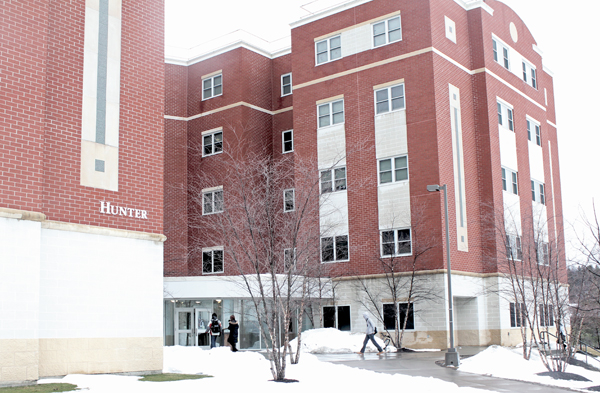
Physical Facilities continues to wage the war against bed bugs after one of the insects appeared in Mountainview College’s Hunter Hall last week.
A female resident of Hunter found one bed bug in her room on March 2. The resident wished to remain anonymous because she had an agreement with Residential Life that her identity would be kept confidential.
According to the New York City Department of Health, adult bed bugs are about the size of an apple seed with a rusty-red color and flattened bodies. A bed bug can lay as many as 500 eggs in a lifetime, and they often live in dark crevices and cracks in woodwork and mattresses.
“I had no idea it was a bed bug at first, I just killed it,” the anonymous resident said when she first found the bug.
Once she killed it, she searched for photos of bed bugs on the Internet and reported the case to Residential Life. ResLife then informed Physical Facilities so bed bug protocol could be followed.
According to Physical Facilities official procedure, after ResLife and Physical Facilities have been notified, a private pest control vendor inspects the room. The vendor decides if a presence or absence is confirmed.
If a presence is confirmed, treatment by the vendor takes place, and ResLife staff provides information to the student regarding cleaning personal items and reducing the potential of any future outbreak.
“The overwhelming number of ‘suspected’ bed bug reports turn out to be negative,” Karen Fennie, communications director for Physical Facilities, wrote in an e-mail. “This happens in a number of ways. A student is bitten by some other kind of bug but thinks it is bed bugs. The student’s room/area is then checked to verify if there are indeed bed bugs. More cases than not, there are no bed bugs.”
If an infestation is not found, the room is treated as a preventative measure, though the mattresses and furniture are not removed.
Rooms, hallways, common areas and stairways surrounding an infested area are treated as well.
According to Fennie, Physical Facilities’ job begins as soon as the student reports a suspected case to ResLife.
“There were a number of false reports last year especially,” Fennie said. She also said she was “not sure if it had to do with a number of national stories on bed bugs and people having more awareness of the possible issue.”
According to Fennie, after the assessment of an absence or presence of infestation, the vendor will go back to the room a few times to retest.
“I think the campus has a good approach to dealing with this kind of issue,” Fennie said. “It has not become an issue, so our approach has been effective.”
Fennie added that members of the Facilities and ResLife staff are trained to be aware of possible problems.
“As an example of our proactive approach … we would go in and do treatments during breaks as a preventive measure,” Fennie said. “We don’t know if that is why our numbers remain low. But as I have mentioned, the campus has been very aggressive and proactive since the get-go regarding this issue.”
Scott Schuhert, associate director of operations for Residential Life, said that the University does not see many confirmed cases on a yearly basis.
“Students should not be concerned at all,” he said. “If any student feels like they may have any pest in their room, they should notify staff immediately.”
Schuhert said he does not foresee an increase in bed bug activity on campus, but offered advice at how to keep the number of cases to a minimum.
“They tend to hitchhike their way in, so continued student awareness is important in keeping numbers down,” he said.


